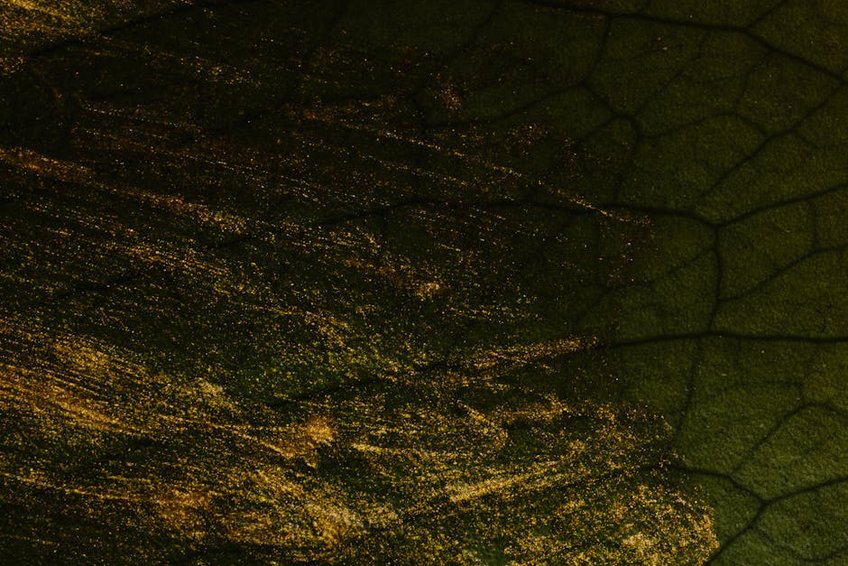Exploring the Ancient Algeria Tassili n’Ajjer Rock Paintings
Imagine standing before millennia-old artwork etched into sandstone cliffs, where ancient civilizations left their mark in one of the world’s most breathtaking desert landscapes. The Algeria Tassili n’Ajjer rock paintings represent one of humanity’s most significant archaeological treasures, offering a window into prehistoric life that continues to captivate historians and travelers alike. Located in southeastern Algeria’s vast Sahara Desert, this UNESCO World Heritage site features over 15,000 petroglyphs and paintings dating back as far as 12,000 years, depicting everything from daily activities to mystical creatures and environmental changes. You’ll find yourself transported through time as you explore these remarkable open-air galleries, where the stories of hunter-gatherers, pastoral communities, and early civilizations unfold across countless rock surfaces. The journey to witness these masterpieces requires careful planning but rewards intrepid travelers with unparalleled cultural immersion and photographic opportunities that will leave you in awe of human creativity and resilience.
Algeria Tassili n’Ajjer Rock Paintings – Essential Information
Before embarking on your adventure to see the Algeria Tassili n’Ajjer rock paintings, understanding their historical context and significance will greatly enhance your experience. These ancient artworks span an area approximately 72,000 square kilometers in the Tassili n’Ajjer National Park, creating what many archaeologists consider the world’s largest prehistoric art museum. The paintings and engravings document climatic changes from lush savannah to current desert conditions, showing how human societies adapted over millennia. You’ll discover representations of wildlife that no longer inhabit the region, including elephants, giraffes, and crocodiles, alongside human figures engaged in hunting, dancing, and domestic activities. The site’s preservation owes much to the dry desert climate and remote location, though increasing tourism requires responsible visitation practices to protect these fragile cultural assets for future generations.
What Are the Tassili n’Ajjer Rock Paintings? – Understanding the Art
- The Algeria Tassili n’Ajjer rock paintings consist primarily of ochre, white, and black mineral pigments applied to sandstone surfaces, with some engravings created by pecking or scratching the rock.
- Archaeologists categorize the artwork into four main periods: the Wild Fauna Period (10,000-6,000 BCE) showing large animals, the Round Head Period (8,000-6,000 BCE) featuring mystical human figures, the Pastoral Period (5,500-2,000 BCE) depicting domesticated animals, and the Horse and Camel Periods from 1,000 BCE onward.
- You’ll find the most accessible concentrations of rock art around Djanet, the main gateway town, with key sites including Sefar, Tamrit, and Tin Tazarift, each requiring guided excursions to reach safely.
- Budget travelers can expect to spend approximately $800-1,200 USD for a 5-day guided tour including basic camping, meals, and transportation from Djanet, excluding international flights and Algerian visa fees.
- Mid-range options averaging $1,500-2,500 USD provide better-equipped 4×4 vehicles, more experienced guides, comfortable desert camps with proper bedding, and additional cultural experiences with local Tuareg communities.
- Luxury expeditions costing $3,000-5,000 USD feature private guides, upgraded accommodations in desert lodges when available, gourmet meals, and extended itineraries covering remote rock art sites rarely visited by standard tours.
- Algeria Tourism Official Guide to Tassili n’Ajjer
- UNESCO World Heritage Listing for Tassili n’Ajjer
Historical Significance and UNESCO Status
When UNESCO designated Tassili n’Ajjer as a World Heritage site in 1982, they recognized its outstanding universal value as both a cultural and natural treasure. The rock art provides crucial evidence about prehistoric climate patterns, biological diversity, and human migration across North Africa, with some paintings suggesting cultural connections to ancient Egyptian and Nubian civilizations. You’ll be walking through landscapes that witnessed the transition from hunting-gathering to pastoralism, with artwork documenting the introduction of cattle herding around 4,000 BCE. The site’s natural features, including dramatic sandstone formations and rare Saharan cypress trees, create a stunning backdrop that enhances the spiritual atmosphere of this ancient gallery.
Access and Preservation Efforts
Reaching the Algeria Tassili n’Ajjer rock paintings involves traveling to remote desert regions where infrastructure remains limited but the rewards outweigh the challenges. The Algerian government, in partnership with international organizations, has implemented conservation measures including restricted access areas, mandatory guided tours, and visitor limits to prevent damage from touching, graffiti, or erosion. You’ll need to obtain permits through licensed tour operators in Djanet, who provide essential logistics, 4×4 vehicles, and knowledgeable guides familiar with both the artwork and desert survival techniques. These measures ensure that while you enjoy this unique experience, the delicate pigments and rock surfaces remain protected from the increasing foot traffic of curious travelers.

Algeria Tassili n’Ajjer Rock Paintings – Planning Your Trip
Organizing your visit to the Algeria Tassili n’Ajjer rock paintings requires careful consideration of seasons, budgets, and physical preparation to ensure a safe and enriching journey. The remote Sahara location means you’ll be dealing with extreme temperatures, limited facilities, and the need for self-sufficiency during multi-day excursions. Most travelers access the region through Algiers or other major cities before taking domestic flights to Djanet, where tour operators coordinate desert expeditions ranging from 3 to 10 days depending on how extensively you want to explore the rock art sites. You should plan your itinerary well in advance, accounting for seasonal weather patterns that can make certain areas inaccessible during summer heat or occasional winter floods. Working with reputable local guides not only enhances your understanding of the artwork but also supports conservation efforts and provides income for Tuareg communities who have safeguarded this cultural heritage for generations.
Best Time to Visit Tassili n’Ajjer
The optimal period for experiencing the Algeria Tassili n’Ajjer rock paintings falls between October and April, when daytime temperatures range from 68°F to 86°F (20°C to 30°C) and nights remain cool but manageable. During these months, you’ll avoid the extreme summer heat that frequently exceeds 104°F (40°C), making hiking and exploration dangerously taxing. The shoulder seasons of October-November and March-April offer particularly pleasant conditions with minimal rainfall and comfortable temperatures for camping. Winter months from December to February bring colder nights that can drop below freezing, requiring proper thermal gear but providing crystal-clear skies perfect for stargazing after days spent admiring ancient artwork.
Budget Planning and Costs
Essential Preparation Checklist
Proper preparation dramatically improves your Algeria Tassili n’Ajjer rock paintings experience, starting with physical conditioning for hiking in desert terrain and acclimatization to altitude variations between 1,000-2,000 meters. You’ll need to secure an Algerian tourist visa well in advance, which requires application through Algerian embassies with processing times varying from two to six weeks depending on your nationality. Pack lightweight, breathable clothing for sun protection, sturdy hiking boots, a wide-brimmed hat, high-SPF sunscreen, and at least 3-4 liters of water capacity per person for daily excursions. Don’t forget camera equipment with extra batteries and memory cards, a quality headlamp for camp activities, and basic first-aid supplies including rehydration salts since medical facilities remain hours away from most rock art sites.
Algeria Tassili n’Ajjer Rock Paintings – Top Attractions and Activities
Your exploration of the Algeria Tassili n’Ajjer rock paintings will take you through diverse landscapes and archaeological sites, each offering unique perspectives on prehistoric artistry and Saharan environment. The rock art distribution across the plateau means you’ll be combining 4×4 travel with guided hiking to reach the most significant concentrations, with routes carefully planned to maximize both safety and artistic discovery. Beyond the famous painted panels, you’ll encounter natural wonders like the eroded sandstone forests of Tamrit, ancient burial mounds, and prehistoric tools scattered throughout the region, providing context for the artwork’s creation. The experience blends physical adventure with cultural immersion, as your Tuareg guides share oral histories, traditional navigation techniques, and insights into how their ancestors interpreted these ancient messages left by earlier inhabitants.
Must-See Highlights of the Rock Art
Among the thousands of Algeria Tassili n’Ajjer rock paintings, several sites stand out for their artistic quality, preservation, and historical significance that you shouldn’t miss during your visit. The “Crying Cows” panel at Sefar depicts emotionally resonant bovine figures with tears streaming down their faces, possibly representing drought conditions or ritual symbolism from the Pastoral Period. At Tin Tazarift, you’ll find the famous “Great Martian God,” a mysterious humanoid figure over 5 meters tall with round head and stylized features that has sparked numerous interpretations about spiritual beliefs. The Jabbaren site contains exceptionally well-preserved scenes of daily life including women gathering grain, children playing, and communal celebrations that provide intimate glimpses into prehistoric society beyond the more common hunting and ritual imagery.
Hidden Gems and Local Favorites
Venturing beyond the most publicized Algeria Tassili n’Ajjer rock paintings reveals lesser-known treasures that offer more intimate encounters with ancient artistry and natural beauty. Local guides often know secluded panels like those in the Mertoutek region, where you might find unique representations of archers and unusual geometric patterns away from the main tourist routes. The Oued Djerat canyon contains extensive engravings along its walls, accessible through challenging hikes that reward with solitude and spectacular geological formations framing the artwork. Many Tuareg guides can show you sites significant to their cultural heritage, including more recent rock art incorporating camel caravans and Islamic symbols that demonstrate the continuous human connection to this landscape across millennia.
Photography Tips and Ethical Considerations
Capturing the Algeria Tassili n’Ajjer rock paintings through photography requires both technical skill and ethical awareness to preserve these fragile artworks while creating lasting memories of your journey. You’ll achieve best results using natural morning or late afternoon light that highlights the pigments without harsh shadows, with a polarizing filter to reduce glare from the rock surfaces. Maintain respectful distance from the panels, never touching the artwork or using flash photography that can contribute to pigment degradation over time. Consider including human elements for scale, but avoid posing directly against the paintings themselves, instead capturing the relationship between the art, the dramatic landscape, and your experience of discovery in this remarkable open-air museum.
Algeria Tassili n’Ajjer Rock Paintings – Practical Travel Information
Navigating the logistics of visiting the Algeria Tassili n’Ajjer rock paintings involves understanding transportation options, accommodation choices, and health considerations specific to remote desert travel. Most international travelers reach Algeria through Algiers’ Houari Boumediene Airport, then take domestic flights to Djanet’s Tiska Airport, which serves as the primary gateway to the Tassili n’Ajjer region. From Djanet, all access to the rock art sites requires hiring licensed guides and 4×4 vehicles through approved tour operators, as independent travel remains prohibited to protect both visitors and the fragile archaeological environment. You’ll need to account for Algerian visa requirements, which typically involve submitting applications several weeks before travel and providing proof of accommodation bookings and tour arrangements for the duration of your stay in the country.
| Category | Options/Features | Price Range (USD) |
|---|---|---|
| Accommodation | Basic desert camping, guesthouses in Djanet, occasional desert lodges | $30-150 per night |
| Tour Packages | 3-10 day guided expeditions including transport, meals, camping gear | $800-5,000 total |
| Additional Costs | Algerian visa fees, domestic flights, travel insurance, equipment rental | $300-800 extra |


